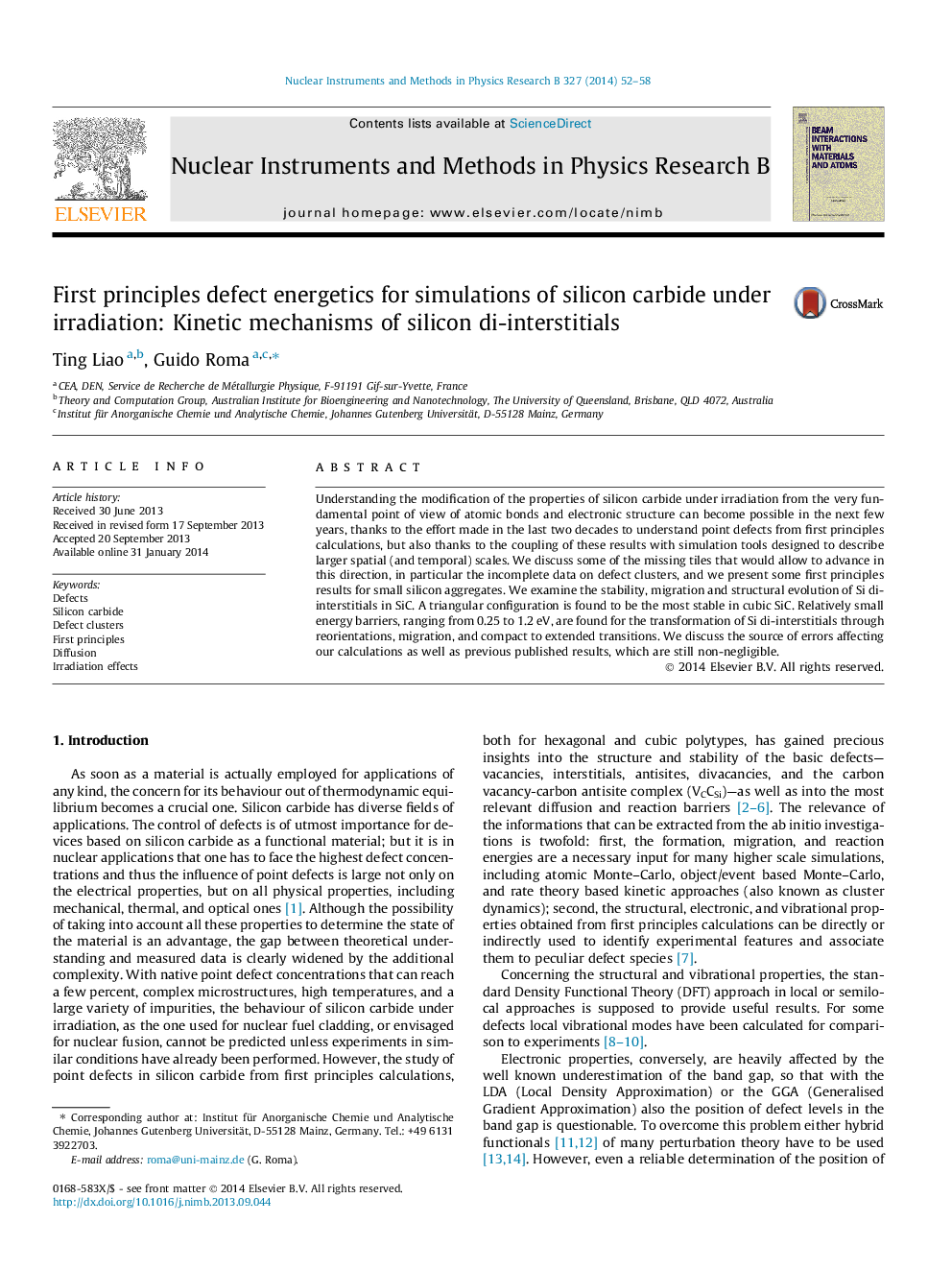| Article ID | Journal | Published Year | Pages | File Type |
|---|---|---|---|---|
| 1680843 | Nuclear Instruments and Methods in Physics Research Section B: Beam Interactions with Materials and Atoms | 2014 | 7 Pages |
Abstract
Understanding the modification of the properties of silicon carbide under irradiation from the very fundamental point of view of atomic bonds and electronic structure can become possible in the next few years, thanks to the effort made in the last two decades to understand point defects from first principles calculations, but also thanks to the coupling of these results with simulation tools designed to describe larger spatial (and temporal) scales. We discuss some of the missing tiles that would allow to advance in this direction, in particular the incomplete data on defect clusters, and we present some first principles results for small silicon aggregates. We examine the stability, migration and structural evolution of Si di-interstitials in SiC. A triangular configuration is found to be the most stable in cubic SiC. Relatively small energy barriers, ranging from 0.25 to 1.2Â eV, are found for the transformation of Si di-interstitials through reorientations, migration, and compact to extended transitions. We discuss the source of errors affecting our calculations as well as previous published results, which are still non-negligible.
Related Topics
Physical Sciences and Engineering
Materials Science
Surfaces, Coatings and Films
Authors
Ting Liao, Guido Roma,
